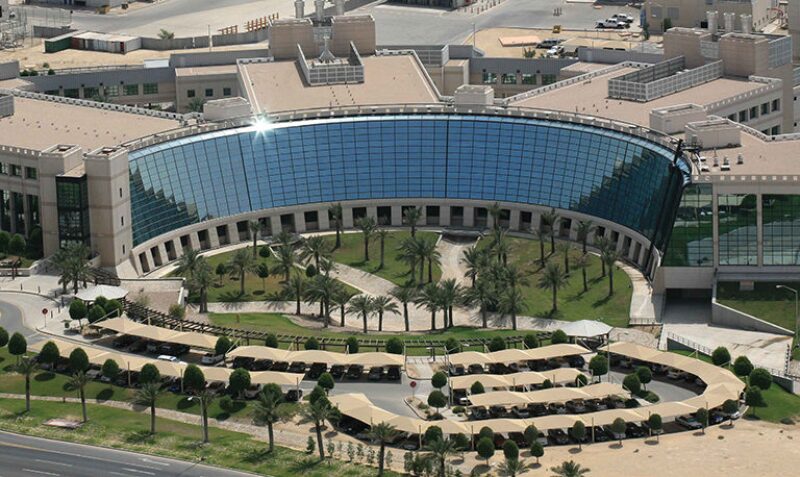Knowledge is power and technology is a game-changer. Those are the key maxims that Saudi Aramco says it is using to shape its strategy as it aims to become the world’s leading integrated energy and chemicals company by 2020.
“At Saudi Aramco, we are pushing forward from a traditional role as buyers and consumers of technology to our new global technology and R&D strategy. We envision becoming an enabler and creator of new technologies,” Khaled Al-Buraik, vice president of petroleum engineering and development at Saudi Aramco, said during the Offshore Technology Conference (OTC) in May in Houston. “There is new urgency as well as new optimism about where we are going. In the past we have been focused primarily on crude oil and gas; now we are progressing to become fully integrated in gas production, including unconventionals, refining, and chemicals.”
To help meet the goal, the company is boosting its global network of R&D centers. In addition to its local center in Dhahran, the Advanced Research Center in the Exploration and Petroleum Engineering Center, Saudi Aramco plans to open three new centers in the US. “We are emphasizing high-impact technologies that typically involve long-range strategies. We are pursuing R&D to bring about breakthrough achievements—not simple or merely incremental enhancements,” Al-Buraik said. “We believe that achieving our research and technology goals requires expansion and interaction with the best talent worldwide.”
The objective of these centers is to leverage international scientific expertise, gain better access to technology, and strengthen collaboration with industry and academia.
A new center in Houston will be the company’s largest center outside Saudi Arabia. A second North American center will be located in Cambridge, Massachusetts, focusing on computational modeling and nanotechnology research. The third center will be located in Detroit, and will be designed to extend the energy giant’s global research and development network. The Houston and Cambridge centers will be operational by the third quarter of this year, and all three will be operated by Aramco Services Company, a subsidiary of Saudi Aramco. The company also has research centers in Thuwal, Saudi Arabia; Delft, Netherlands; Paris; and Beijing; and a technology center in Aberdeen.
The Houston center will be located in the city’s far west “energy corridor,” a major hub for oil and gas companies. It is near chemical and oilfield fluids manufacturers as well as service companies and R&D labs. The center will consist of teams spanning upstream subsurface domains and will focus on developing technology to improve the discovery and recovery of oil and gas.
The Cambridge center will be a standalone center adjacent to the Massachusetts Institute of Technology, and will focus on computational reservoir modeling, nanotechnology, and advanced gas membrane systems. The Detroit center is located close to major automotive companies and will pursue research and collaboration on auto fuel efficiency and engine development. The three US-based centers will employ experienced professionals with advanced degrees in petroleum engineering, geology, chemistry, materials science, and related fields.
In addition to setting up its own R&D centers, Saudi Aramco is also partnering with key global research and development centers to collaborate in R&D of innovative technologies regarding CO2 storage and management. Earlier this year, Saudi Aramco and Korea Advanced Institute of Science and Technology (KAIST) signed a memorandum of understanding to establish the Saudi Aramco-KAIST CO2 Research Center near KAIST’s main campus in Daejeon, South Korea. The two will share carbon management technologies, establish exchange programs, and conduct joint projects.

“The CO2 Research Center represents a major step in Saudi Aramco’s research and technology strategy to partner with top global institutions to help address and find sustainable solutions to the world’s energy challenges both domestically and internationally,” said Khalid A. Al-Falih, president and CEO of Saudi Aramco.
The company’s goal is to establish R&D centers in technology hubs in Europe and North America.
“The Saudi Aramco-KAIST CO2 Research Center represents another step part of our R&D strategy execution to help develop innovative technologies towards CO2 capture and conversion by bringing the strengths of Saudi Aramco as a technology innovator with those of KAIST as a center of academic excellence,” said Samir Tubayyeb, vice president, Engineering Services, Saudi Aramco.
Saudi Aramco is also collaborating more with universities and academic institutions. “We have a strategy to better leverage global scientific expertise and strengthen collaboration in providing solutions to the company’s research and technology challenges. We have many coming from academia to the professional world. This is a bridge that needs to be crossed. Toward this we have established the Upstream Development Center,” said Al-Buraik.
This center brings together petroleum engineers and geoscientists and has two main objectives: to compress the onboarding cycle to 2 years from the typical 3 to 4 years through tailored courses and hands-on training and, second, promote collaboration among engineers and geoscientists.

